Every camera starts to degrade after years of use. Among the many things that happen when cameras are stored away for a long time, is that the camera’s rubber parts start to degrade. Rubber degradation is inevitable. However, there are some concrete steps that you can take to preserve the rubber parts of your camera. The same ideas apply to all rubber parts, regardless of purpose.
There isn’t a way to fully restore rubber that has already started to degrade, but there are ways to prevent the rubber from degrading too quickly in the first place. This is a strong case of prevention being better than cure. Prevention of rubber degradation is especially important if you are in hot and humid climates.
In this article, I’m going to help you to understand how and why rubber degrades, and how we can slow down that process.
The Reality of Rubber Degradation
Rubber is an organic compound (isoprene) that is made from latex (the sap of the rubber tree), or from petroleum and petroleum products. Over time, any rubber will start to degrade, so manufacturers use chemicals and physical processes to slow down the process. These processes ensure that rubber retains its shape, form, and elasticity for as many years as possible.
Rubber starts degrading as soon as it’s made. The chemical additives in rubber are fine-tuned toward the very specific application of each rubber part. This is why some rubber parts and surfaces degrade sooner than others.
There are also steps that you should take to ensure that you take good care of your equipment for the rubber to last a long time.
Checklist To Preserve Rubber Parts:
Here are some positive steps that you can take to ensure that your camera’s rubber parts don’t get sticky.
- Keep the surface of the rubber clean. Clean-off hand oils, solvents, debris, and other items from the rubber as soon as possible, and before your store your camera or accessories for long periods.
- Keep rubber at low temperatures, with low humidity (cameras like to be stored below 65%RH). This reduces the volatility of the rubber compound.
- Keep rubber in a space with good ventilation, and where harmful vapors don’t build up. Chemicals penetrate into rubber, and can affect it over time.
- Use your camera often so that the rubber parts get stretched and used. This ensures that the chemical additives stay within the rubber material, and do not separate from it.
Avoid This To Preserve Rubber Parts:
Preserving the rubber grip of your camera is as much about avoiding the wrong actions, as it is about doing the right things.
- Do not use solvents to clean rubber. Solvents like isopropyl alcohol, thinners, etc could damage the rubber. In fact, that is why we talk about using isopropyl alcohol later in this article – to remove rubber coatings.
- Do not expose the rubber to UV light for extended periods. For example, UV light from daylight and fluorescent lamps. UV light breaks down the components of rubber, aging it sooner than it needs to. That said, don’t be too protective of it either. Cameras are meant to be used.
- Do not expose rubber parts to high humidity and temperatures over long periods of time. Avoid RH (Relative Humidity) values over 65%. Extreme situations with heat and humidity make the components of rubber grips and other camera parts break down. So if you carry your camera around with you daily, don’t leave your camera in your car in the parking lot while you go in to work.
- Do not expose rubber to chemicals, acidic fumes, polluting gases like Sulphur Dioxide, Nitrogen Dioxide, and other volatile gases that are emitted from plastics and rubbers as they decompose. The chemicals in sunscreen, DEET, perfumes, deodorants, and other insecticides can also kick off rubber degradation. Rubber is porous, and it absorbs these chemicals from the environment.
Which Parts Of A Camera Have Rubber That Can Degrade?
Cameras and other systems have many rubber parts both inside them and outside. It becomes important to take steps to preserve these rubber parts for your equipment to have a long usable life. Let’s separate these parts into rubber on the camera, and rubber on the lens…
i. Rubber Parts On The Camera
Most cameras have multiple rubber parts in various places of the body.
- Cameras have rubber on their grips, and eyepieces,
- Some cameras have their metal surfaces coated in thin rubber for added grip. The thin rubber coating often becomes sticky when it degrades.
- Cameras and lenses also have rubber and plastic washers, gaskets, covers for where jacks and ports are covered against the elements, and more.
It’s important that these parts don’t degrade.
ii. Rubber Parts On The Lens
- Lenses often have focus or zoom rings with rubber on the grips to ensure that your fingers don’t slip. These are the parts that usually start degrading with a white residue over them.
- Inside the lens, there are gaskets that keep moisture and dust out of the lens insides.
Lens manufacturers account for all of this when selecting the type of rubber to use for the gaskets, but it helps to maintain your lens well.
iii. The Rubber on Accessories and Storage Material
These are parts that come into contact with the camera and lens often, and they sometimes leave a residue. The rubber on camera bags, the pluck-out foam in hard cases, the grippy rubber on the insides of camera straps, eyecups, cables that transfer data, the list goes on…
It’s especially important that your cameras are protected from degrading rubber and plastic when kept in long-term storage. In the past, I’ve noticed that the foam in hard cases tends to degenerate, and since these cases are air-tight there is nowhere for the volatile compounds and gases to go. These gases can fog up lenses, and cause corrosion on the outside of your camera.
Why Does Rubber Degrade Over Time?
Rubber is made of either organic or synthetic raw materials. Organic rubber is made from latex, the sap from the rubber tree. Inorganic rubber is made from petroleum byproducts.
Both forms of rubber start off as sticky substances and can start degrading as soon as they’re made. To prevent this, various steps are taken, starting with vulcanizing of latex, and the addition of various chemicals such as antioxidants, UV stabilizers, antiozonants, etc.
However, oxidation, thermal aging, and general wear and tear of rubber parts is an inevitable part of camera usage.
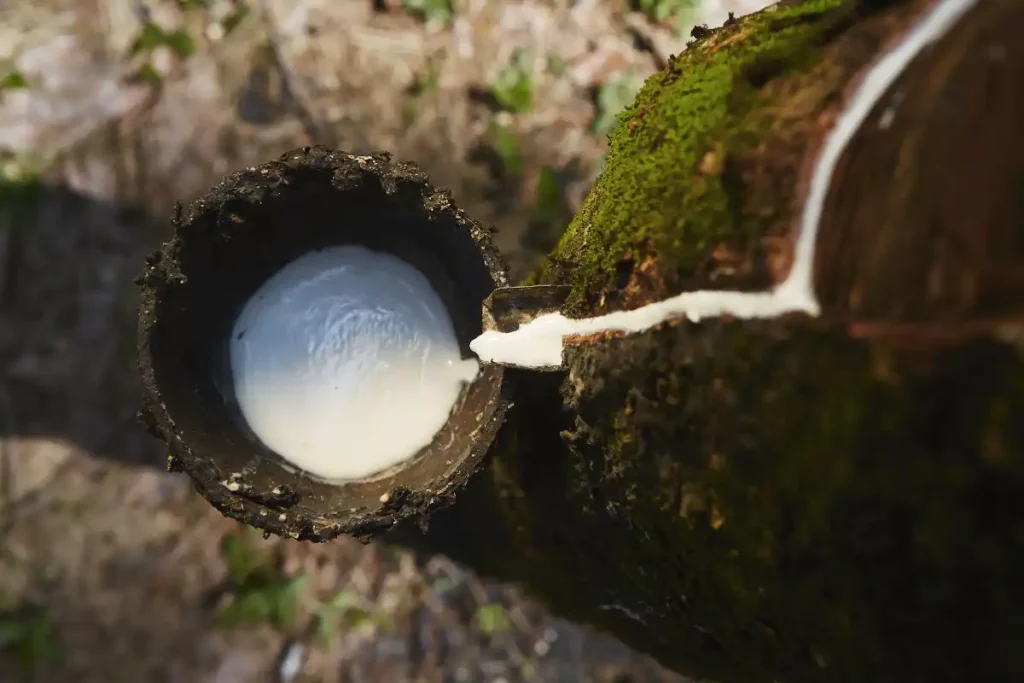
Why use Rubber in the First Place, if it is Going to Degrade?
Rubber offers properties that are not easily found in nature.
- It is pliable
- It is an insulator
- It can be used to create water-tight seals that prevent moisture from entering into sensitive equipment
- It actually has a reasonably long working lifespan
- Rubber parts can easily be produced, and
- Rubber is not too expensive unless it needs to have some really unique properties.
Rubber has been a part of our civilizations for many centuries and is an integral part of our modern life today.
For these reasons, it’s no surprise that cameras also have rubber parts. It’s up to us to take good care of our equipment.
What Are The Main Causes Of Rubber Degradation?
Time is probably the biggest factor in rubber degradation, but there are other factors that could accelerate rubber degradation. There are many types of rubber and each one has a slightly different set of factors that causes it to degrade.
Here are some of the common reasons for the acceleration of rubber degradation.
- Oxidation
- Exposure to UV light
- Heat (keep rubber as cool as possible)
- Humidity (keep it below 65% RH)
- Lack of use
- Exposure to certain chemicals such as certain Oxidizers, Acids, Oils, and Alkalis.
- Transfer of chemicals from hands to rubber, which can degrade it; like DEET and Sunscreen to rubber
- Certain bacteria (See References Below)
Why Does Rubber Start Becoming White?
Natural rubber starts degrading after a while, with white material forming on the outside. Usually, the rubber starts becoming white due to a crystallization of the rubber’s compounding components and is called Rubber Blooming.
These components come out of the bulk of the rubber and crystallize on the surface when they’re not used often. The crystals take on a white form that could be powdery, or ingrained in the rubber itself.
The rubber ends up feeling powdery, hard, and whiteish-grey in color. This is sometimes called rubber dry rot but is not actually a process of rotting.
This can be prevented by regular use. As the rubber flexes, it keeps these compounds from rising to the surface.
How Can I Remove The White Powdery Surface From Rubber?
As you already know, you should not be exposing rubber to chemicals if you want it to last. It may remove the white layer temporarily, but in the long term, you can expect that the rubber will start to degrade even more quickly if you use chemicals like isopropyl alcohol or acetone. Just don’t use them.
Instead, prevention is better than cure. Use your camera regularly, and with regular use, the rubber will flex, and the various chemical components of the rubber will be less likely to leave the main body rubber, creating that white layer on top.
Typically, to remove this white residue that has already formed on the surface of the rubber grip, or on the lens rings, you can
- Buff off the crystallized residue
- Clean it with water and nothing more, and
- Apply a conditioner that is recommended for that particular type of rubber.
Now, since Canon, Sony, Nikon, and other camera manufacturers don’t really sell lens/camera rubber reconditioning formulas, it makes sense to just use your equipment carefully and help it to last a long time through careful and mindful use.
What Should You Do With Rubber Parts That Are Starting To Become Sticky?
Stickiness is the second way in which rubber tends to deteriorate and is also called Rubber Reversion. While the first way sees the rubber becoming hard because of environmental reasons, this second way is from rubber returning to its original state, like sticky plastic.
Start by treating the rubber parts of a camera better immediately. Make sure that you keep rubber away from hot and humid areas. Store you camera in a humidity and temperature-controlled areas.
If the rubber is only just starting to become sticky, you can give it a light dusting of talcum powder to reduce the tackiness. Prevention is better than cure, so ensure that you don’t let hand lotions, DEET, or sunscreen get on the rubber parts of the camera. DEET is a plasticizer1, and is especially harmful to rubber on your camera.
How To Stop Rubber Parts On Electronics From Becoming Sticky
- Store the electronics carefully, away from heat and humidity – as mentioned earlier. This will ensure that your camera equipment does not start becoming sticky because of rubber reversion.
- Do not use DEET or Sunscreen on your hands while using a camera. This is a major reason why rubber on cameras becomes sticky over time. Even game controllers become sticky for this reason.
- Certain types of rubber are prone to becoming sticky and even losing adhesion to the surface that it is applied to. This often happens in tropical climates. I have observed this happen on a GoPro Hero2, Zoom H4n Audio Recorder, and other smaller electronic devices. If this happens, you may have to just scrape it off.
How Do You Clean Off Sticky Rubber From a Camera?
Sometimes the layer of rubber covering a device is thin but very sticky, such as on the Zoom H4n. You can remove the thin rubber layer by applying Isopropyl Alcohol with a cloth and rubbing it until all the rubber comes off.
Be careful not to use so much alcohol that it drips into the joints of the camera body. Just moisten a cotton or microfibre cloth with rubbing alcohol, and wipe off the rubber coating until the surface below it is completely clean of it.
Other sources claim that moistened Baking Soda is also useful to remove this thin layer of rubber. I would not recommend using either of these techniques with any serious photography equipment as it is quite likely to enter into the camera or lens and damage it permanently.
It may be safer to physically remove sticky residue of rubber instead. In the case of my GoPro Hero, I scraped off the layer with the smooth edge of a knife. This will take some time, and skill to avoid scratching the device surface. This method is effective if your device has a thin coating of plastic or rubber that has reverted, and become sticky, but not for rubber grips, and thick rubber surfaces.
In Conclusion
To conclude, take care of your camera … use it often. Remember to store it carefully when it’s not being used, in low RH and low temperature. Wipe it down before storing it, and if you can, remove chemicals from your hands when handling the camera throughout the day.
All these steps will help the rubber on your camera body to have a long, productive life, and you can avoid rubber degradation – Blooming/Dry Rot and Reversion.
References:
- Thermal-Oxidative Degradation of Rubber
- Care of Objects Made from Rubber and Plastic – Canadian Conservation Institute (CCI) Notes 15/1
- A Guide to Rubber Degradation & Rubber Deterioration Causes
- Stickiness: The Insulting Reality of Rubber Reversion
- Rubber and Dry Rot: Not Really Rot, Just Rotten Luck
- How To Clean Sticky Rubber
- Glossary of Rubber and Sealing Terms
- Microbial Degradation of Rubber: Actinobacteria
- Degradation of Natural Rubber by Fungi imperfecti
- Degradation of Polymers
- Understanding the Link Between Ozone and Rubber Deterioration
Footnotes:
Help Us To Continue Creating
Get our email newsletter to stay up-to-date with our latest posts. It’s easy to read and is mailed once in 2 weeks.
The easiest way to support Beyond Photo Tips is by using our affiliate links when you buy anything at all. It will never cost you anything extra, and we get a small commission from it, which helps us a LOT! We share our recommended equipment list here.
Some of the links to products on this website are affiliate links, and we only ever link out to gear that we recommend.
You could also show your appreciation by buying us a coffee. Finally, we appreciate you being a part of the community, so do say hi!

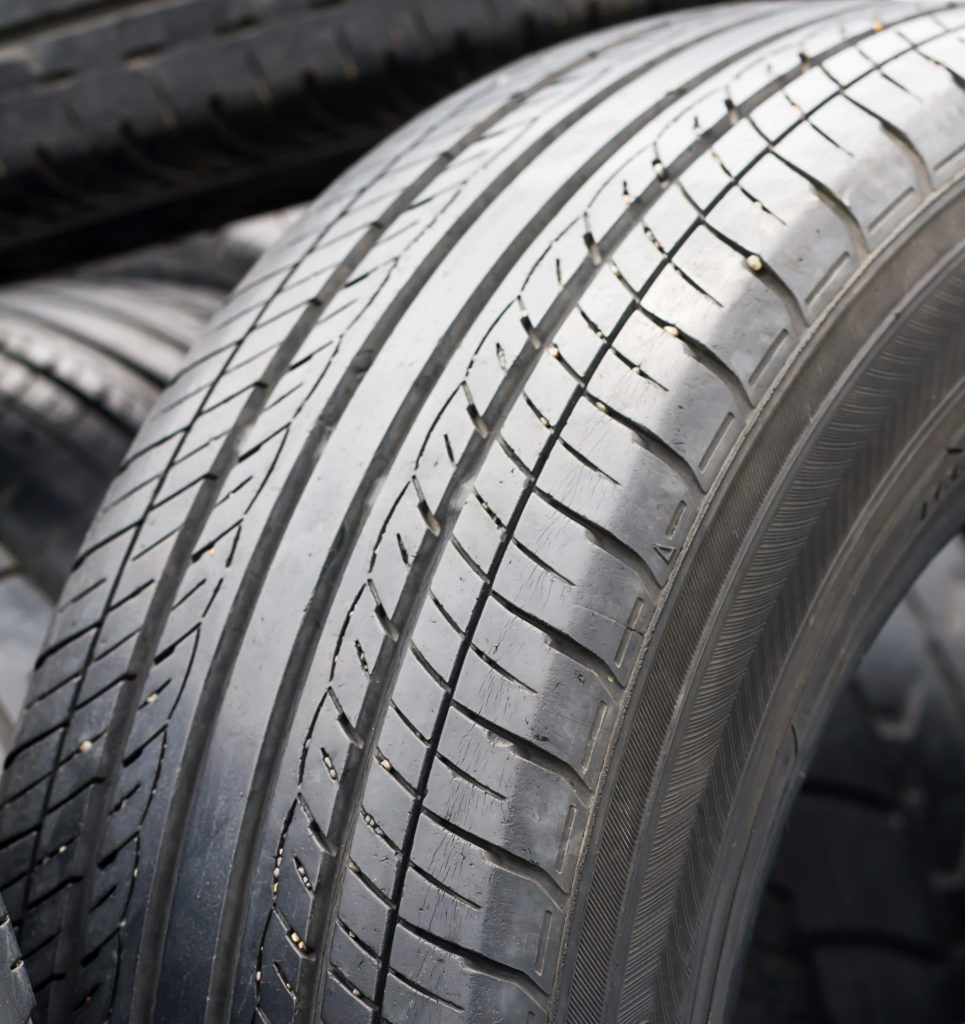
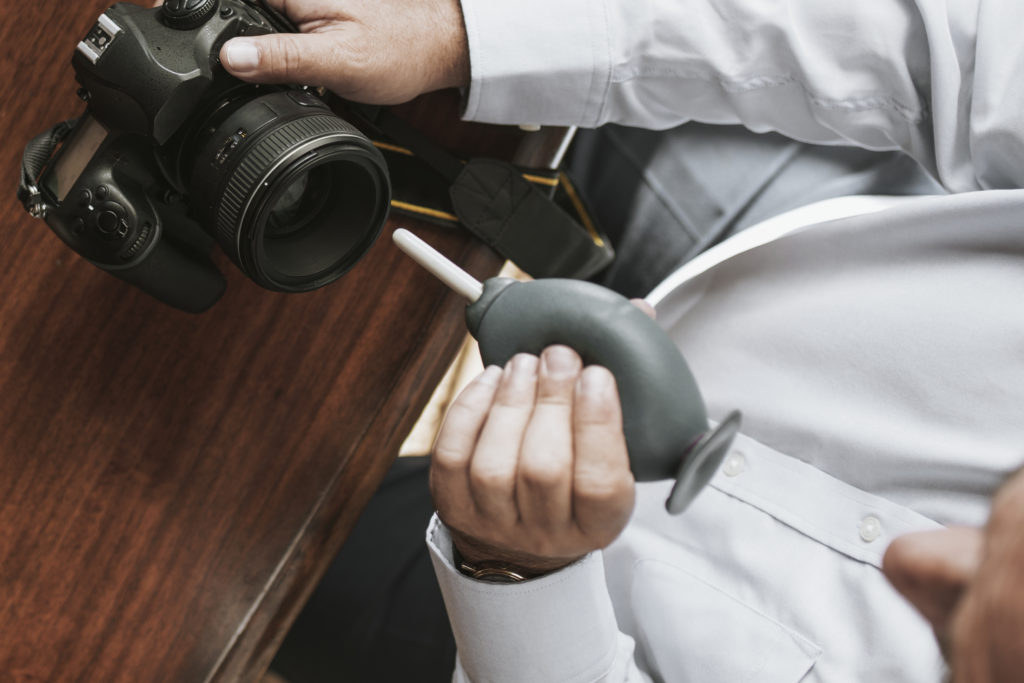
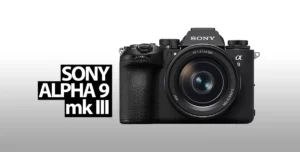
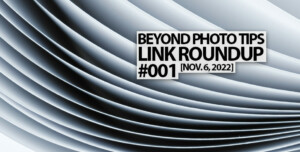
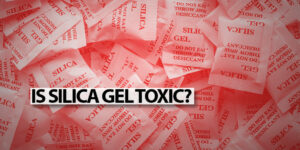
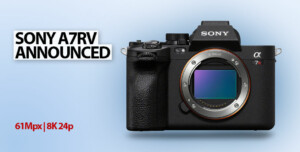
Good one. Thanks!